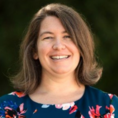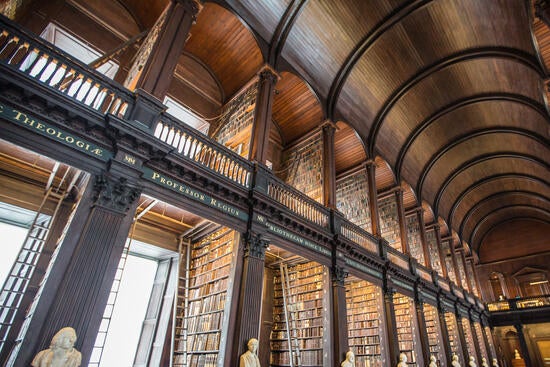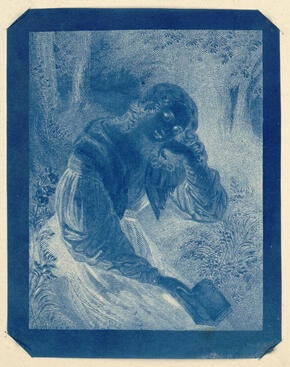Supporting Graduate Students' Academic and Professional Success

Please join us in GradSuccess as we welcome and learn a little bit about Anne Sullivan, who joined Graduate Division as the new Coordinator of the Teaching Assistant Development Program on September 1st.
Anne, you were previously a student here at UCR. Can you tell us a little bit about your background and your history here? For instance, any favorite memories as a grad student?
UCR and I go way back. I received my B.A. in English from UCR, and as an undergrad I participated in the CHASS Connect and University Honors programs, worked on the Mosaic Art & Literary Journal, and studied abroad for one year at Trinity College, Dublin, Ireland.
[Image Description: Photograph of the Long Room in the Library at Trinity College, Dublin]
Pictured: Eat your heart out, Harry Potter!
After college, I worked as a researcher and technical writer for two years before deciding to return to UCR as a graduate student. I filed my dissertation on nineteenth-century British literature and media history in 2018, and I’m currently revising it into a book: “On Fire: Industrialization, Media Technologies, and the Imagination, 1834-1936.”
Some of my favorite memories from grad school include: laughing with my students at strange moments in Victorian novels (you might not expect it, but Bram Stoker’s Dracula has some funny scenes!); hanging out with friends while competing in weekly pub trivia events hosted by Hangar 24 or Wicks Brewery; attending book club meetings and author signings at Cellar Door Books; writing at various coffee shops in Canyon Crest and Downtown Riverside; and going on hikes alone or with friends at Mt. Rubidoux, the Box Springs Mountains, and the Sycamore Canyon Wilderness Park.
Two standout memories are astronomy related. I accompanied Professor Gabriela Canalizo, Dr. Mario De Leo-Winkler, and a group of UCR Honors Students on a field trip to Joshua Tree National Park in 2015 where I took photographs of the Milky Way while the students practiced deep space photography. Later, in 2018, I joined members from our campus and local communities at the UCR Bell Tower to watch (and photograph) the Super Blue Blood Moon Lunar Eclipse from 3:00 to 6:00 AM.
I understand that you were recently on fellowship with the Harry Ransom Center at the University of Texas. What subjects did you research there? What did you like/dislike about Austin?
Austin lived up to its hype! I really enjoyed spending time with old and new friends while I explored Austin’s famous food scene. I also loved paddle boarding along Lady Bird Lake and watching the local bat colony take flight from Congress Avenue Bridge (this is a nightly, seasonal spectacle featuring up to 1.5 million bats). What I did not enjoy so much was living through Austin’s hottest summer on record. Imagine Riverside’s hottest temperatures and then add some Texas humidity.
[Image Description: Hundreds of bats fly through the air over Austin at dusk.]
Pictured: This is putting us in a Hallowe’en mood!
Despite the heat, I am so grateful I finally got to do this research trip. I won a two-month residential research fellowship from the Harry Ransom Center in March 2020 right as the pandemic was shutting everything down, so I was afraid this trip might be postponed indefinitely. While at the HRC this summer, I worked with a fantastic archival collection called The Herschel Family Papers, which includes both astronomical and photographic materials. Readers are probably familiar with Sir William and Caroline Herschel [ed. note: I was not], the brother-sister duo famous for their astronomical discoveries in the late eighteenth and early nineteenth centuries, but I focus on Sir William’s son, Sir John F. W. Herschel. Sir John was a famous astronomer too, and I went to the HRC to investigate his shared interest in both astronomy and photography. He is one of the early practitioners of early photographic technologies and invented the cyanotype process in 1842. Two highlights from my time in the archives included reading Sir John’s diaries from 1839 to 1871 and consulting some of his early photographs taken between 1839 and 1842 in a low light room.
[Image Description: One of John Herschel’s cyanotype images entitled “Still In My Teens” (1838).]
Pictured: Intrigued? Learn more about cyanotype images.
Before your fellowship at the Harry Ransom Center, you were a postdoc for three years at Caltech. What types of classes did you teach? What did you enjoy about it?
I joined Caltech in 2019 as a postdoctoral scholar and instructor in Visual Culture, and I designed and taught interdisciplinary classes on “Consuming Victorian Media,” “Volcanoes,” and “Picturing the Universe.” My “Volcanoes” students analyzed artistic and scientific responses to three historic eruptions that were significant to nineteenth-century British imaginations: Vesuvius 79CE, Tambora 1815, and Krakatoa 1883. In my “Picturing the Universe” class, we studied the historical development of astronomical photography alongside literature and art from the late eighteenth century to the twenty-first century. I loved participating in a truly interdisciplinary and collaborative community, and my colleagues and students were generous in sharing their passion and expertise. I got to work with archivists, artists, astronomers, geologists, historians, and literary scholars on questions like, “what can we learn from studying the methods we use to record astronomical observations?” I feel that I contributed positively to the Caltech community and that the people I met helped me reach my research, pedagogy, and outreach goals.
What do you want teaching assistants at UCR to know about the TA Development Program? How can it help them?
The Teaching Assistant Development Program (TADP) provides training and ongoing support for all TAs at UCR. TADP offers interdisciplinary pedagogy workshops each quarter, continuing training, and office hour consultations. We also have tons of resources on our website, including recordings from previous workshops. Our team can enhance the pedagogical mentorship you’re receiving from your home department, and/or we can provide a space where you can ask questions or talk through problems as part of a larger teaching community.
What are your top three “teaching tips” for new TAs this Fall?
1. Talk with your students about communication. This might seem obvious, but it isn’t. Let students know you want to talk with them about their questions and ideas. Be clear about when and how students can contact you. Remind students they can ask questions in class, via e-mail, or during office hours. Set boundaries if needed (e.g. “I check e-mail Mon. – Fri. between Noon and 5 PM”). Consider modeling how students might compose an e-mail requesting an office hours appointment, or share examples of the kinds of conversations you are open to having during office hours. In my experience, talking openly about multiple forms of communication helps empower students to ask questions and to participate in class discussions.
2. Be kind to yourself. Learning to balance teaching and research responsibilities with caring for yourself, family, friends, and your community is challenging. So, plan to do something nice for yourself after meeting goals like completing a lesson plan, finishing a stack of grading, or delivering your first lecture. Go for a walk, meet up with friends, watch a new episode of TV, or binge your favorite podcast.
[Image Description: Maya Rudolph on “The Good Place” says, “I, like, binged all of season 2 in a day.”]
Pictured: I mean, we’ve all been there.
3. Build your teaching community by asking for feedback and by citing your sources. Don’t hesitate to ask for help if you are unsure about something or if you encounter a challenging situation. Talk to peers in your cohort and to more senior graduate students who have taught the class before. Talk with the course instructor or another faculty mentor. Remember to reach out to the TA Development Program in GradSuccess too. As you build your teaching community, remember to cite the good ideas you’re building from. Crediting our peers and mentors helps ensure that we are building a positive and inclusive teaching and learning community. For one example, see how Professor Eugenia Zuroski credits the work of others when describing the process of developing “Where Do You Know From?,” a classroom exercise “for considering how your knowledge is situated.”
How can people reach you in GradSuccess, either in person or online?
Please e-mail me at tadp@ucr.edu or attend my virtual office hours via Zoom on Fridays from 1-3PM. I’m happy to talk about resources, discuss challenges that you may be facing, and/or chat about ideas for future TADP workshops.


